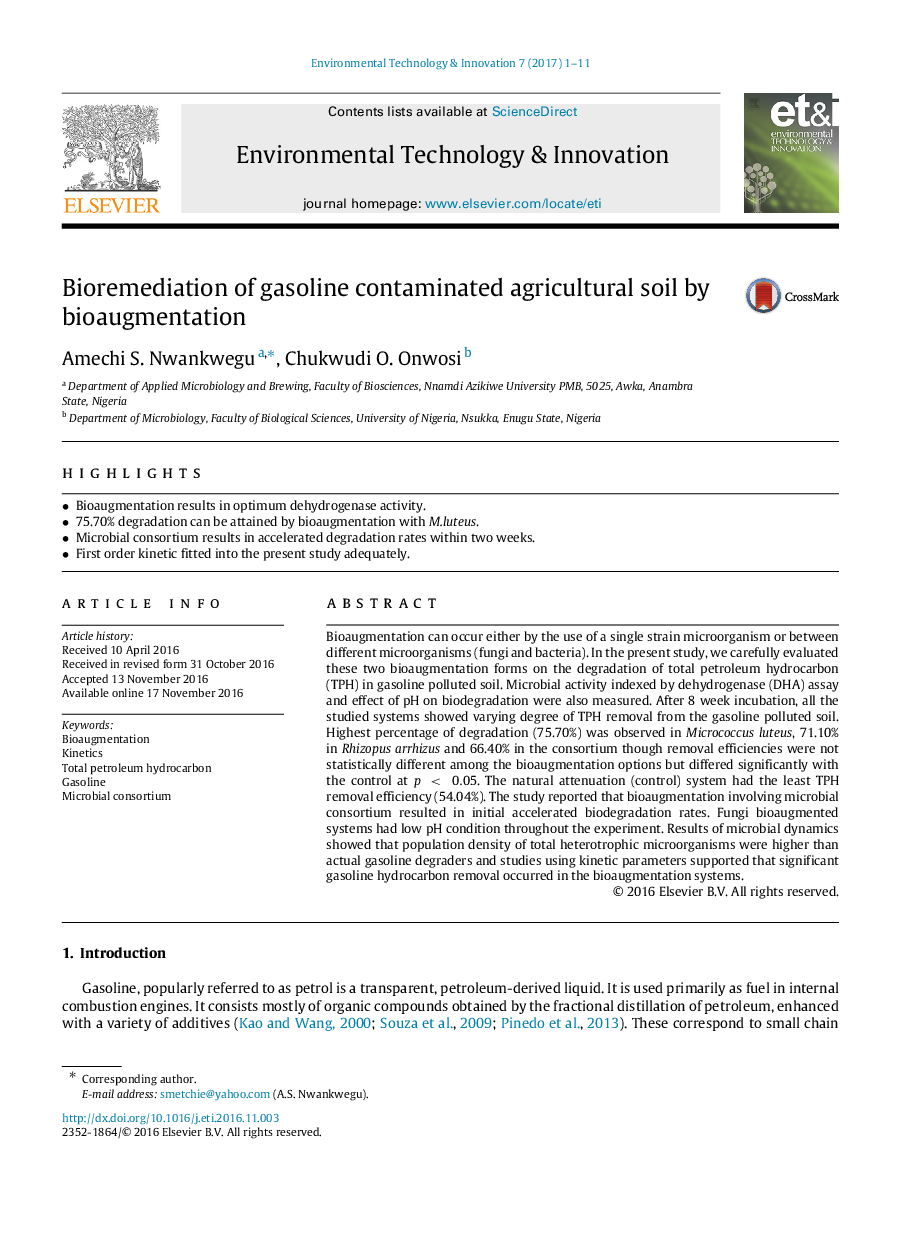| Article ID | Journal | Published Year | Pages | File Type |
|---|---|---|---|---|
| 5749627 | Environmental Technology & Innovation | 2017 | 11 Pages |
â¢Bioaugmentation results in optimum dehydrogenase activity.â¢75.70% degradation can be attained by bioaugmentation with M.luteus.â¢Microbial consortium results in accelerated degradation rates within two weeks.â¢First order kinetic fitted into the present study adequately.
Bioaugmentation can occur either by the use of a single strain microorganism or between different microorganisms (fungi and bacteria). In the present study, we carefully evaluated these two bioaugmentation forms on the degradation of total petroleum hydrocarbon (TPH) in gasoline polluted soil. Microbial activity indexed by dehydrogenase (DHA) assay and effect of pH on biodegradation were also measured. After 8 week incubation, all the studied systems showed varying degree of TPH removal from the gasoline polluted soil. Highest percentage of degradation (75.70%) was observed in Micrococcus luteus, 71.10% in Rhizopus arrhizus and 66.40% in the consortium though removal efficiencies were not statistically different among the bioaugmentation options but differed significantly with the control at p<0.05. The natural attenuation (control) system had the least TPH removal efficiency (54.04%). The study reported that bioaugmentation involving microbial consortium resulted in initial accelerated biodegradation rates. Fungi bioaugmented systems had low pH condition throughout the experiment. Results of microbial dynamics showed that population density of total heterotrophic microorganisms were higher than actual gasoline degraders and studies using kinetic parameters supported that significant gasoline hydrocarbon removal occurred in the bioaugmentation systems.
